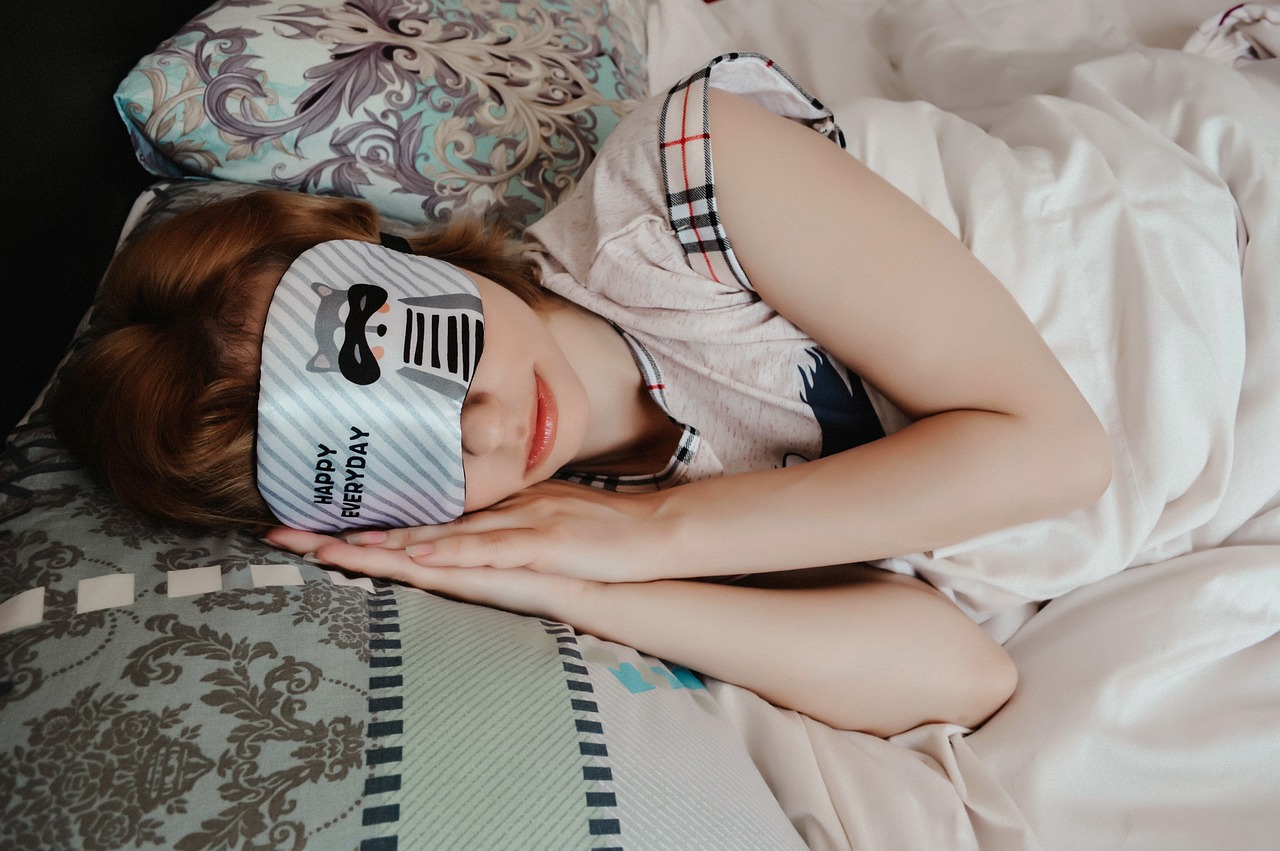The Art of the Perfect Power Nap
Unlock the secret to rejuvenating naps that supercharge your day! Discover the science of napping with flair, conquering mid-day slumps like a pro. Embrace the art of brief, effective naps, battling fatigue with ENERGY and chic precision. Dive in to transform your five-minute siestas into dynamite dream sessions!
Before You Nap
Master the Art of the Perfect Power Nap
Set the Stage for Nap Nirvana
What's your ideal nap ambiance?Create your personal sanctuary where sleep reigns supreme. Dim the lights to lull your body into tranquility. Imagine the softness of twilight wrapping around you, beckoning rest. For an added touch of comfort, snuggle up with a cozy blanket—consider it your personal cocoon against the harsh realities of the day.
Eliminate distractions as if you’re a Zen master in the art of mid-day meditation. Silence your phone and banish that pesky email alert into oblivion. Feel free to play your favorite nature sounds—ocean waves, anyone?
If you’re navigating the wild chaos of city life, consider reinforcing your fortress of peace with an eye mask or earplugs. These trusty allies will block out any visual or auditory villains vying for your attention.
Picture this: your office neighbor, Bob, trying to discuss his weekend plans while you blissfully indulge in an afternoon escape. Whether at home or maneuvering the office jungle, take these steps to curate an environment that speaks the language of dreams and comfort. Remember, a well-prepared nap space is the first step to napping happiness.
Master the Clock: Timing is Everything
How long should you really nap for?Set a timer for your nap to become the champion of snooze efficiency! The magic number here is 10-20 minutes. Anything longer and you might encounter the dreaded sleep inertia—feeling groggier than a bear in mid-January.
Consider this scenario: you lie down in your nap haven, close your eyes, and just as you’re about to drift off into never-never land, your cat decides to perform acrobatics on your stomach. That’s where a reliable alarm comes in. Something soothing, like gentle chimes, can gradually wake you without startling you.
Experiment to find your sweet spot. Maybe you’re a 12-minute napper—just enough for a quick recharge, not long enough for your brain to start dreaming of its vacation in Aruba.
For those of us who prefer not to gamble with time, try different lengths and note how you feel afterward. Everyone’s energy rhythms differ. Once you’ve found that dreamy duration, stick with it to maximize your nap performance.
Remember, effective power naps are less about sheer length and more about precision. Like a great recipe, it’s all about the perfect timing!
Battle the Nap Guilt Monster
Is napping just for the lazy? Think again!Reframe your mindset about napping—ditch the guilt and embrace the artistry of a well-timed siesta! Remember, power napping isn’t just lounging laziness; it’s your ticket to higher productivity and creativity. Channel your inner Einstein and envision him pondering the secrets of the universe with closed eyes, or picture Tesla dreaming up new inventions in his restfully creative moments.
Educate yourself on other successful nap enthusiasts to boost your confidence. Did you know Leonardo da Vinci practiced polyphasic sleep, allowing him multiple rejuvenating naps? View these creative titans as your napping role models who understood the magic behind this productivity tool.
Debunk common myths that equate napping with time-wasting. Instead, regard it as a strategic mini-vacation for your brain, producing alertness and inspiration. Armed with this knowledge, you’ll rest assured knowing your brain cells are not on strike but rather regrouping for a creative onslaught.
Visualize success stories —take a cue from air traffic controllers who use power naps during stressful shifts to remain vigilant. See each nap not as an indulgence but as a superpower that keeps distractions at bay while fueling your inner genius.
Mind Over Mattress: The Mental Shift
Do you struggle to nap? It's all in your head!Practice relaxation techniques to transform your mind into a sleep-conducive space. Picture this: you’re the conductor, orchestrating a symphony of calm. Turn the volume down on the day’s chaos with deep breathing exercises. Inhale like you’re filling a calming balloon; exhale, releasing stress into the ether.
Mindfulness is your golden ticket. Imagine yourself on a serene beach, waves softly crashing as the sun warms your face. Visualize it so vividly you can almost feel the sand between your toes. Use this peaceful setting to coax your mind into a nap that’s as gentle as a Sunday morning brunch.
Cultivate a napping mindset. Recognize napping isn’t a sign of laziness but a strategic act of self-care. Let go of the idea that society demands relentless hustle. Instead, embrace the perspective that rest fuels productivity.
Lastly, when your mind plays tricks, insisting you should be doing something, channel your inner Zen master. Remind yourself that freeing your mind from stress allows creativity and energy to flow back with a vengeance once you awake. After all, a relaxed mind is the ultimate nap companion.
Rise and Shine: Post-Nap Rituals
What's next after your nap?Shake off grogginess like a dog ridding itself of water. Don’t let residual sleepiness linger—stand up and stretch like a morning cat in a favorite sunbeam. Reach for the sky, touch your toes, and twist your torso to wake and stretch every muscle.
Sip some water to kick your hydration gears into action. A small glass will work wonders for waking up your brain and banishing any post-nap fuzziness. Think of it as the oil for your cognitive engine, revving it up for the tasks ahead.
Expose yourself to natural light like a sunflower seeking those warm rays. Head outside if you can, or draw back the curtains to let sunlight flood your senses. This is your body’s way of clicking ‘refresh’ on its internal clock, nudging you back into wakefulness.
Finally, jump back into your day with renewed gusto. Perhaps you’re in a meeting like a post-nap superhero, brimming with clear-headed ideas. Ready to tackle that inbox with ninja-like precision? Transform that sleepy panda into a proactive powerhouse!
Nap Your Way to Success
Embrace power napping as your secret weapon for a more productive, energized day! By setting the stage, mastering timing, battling guilt, shifting your mindset, and crafting post-nap rituals, you’re poised for success. So, ready to power up your life with just a little snooze?











“Rise and Shine: Post-Nap Rituals” is such a game-changer. I used to just roll out of bed and feel groggy, but now I do some quick stretches, and it’s like waking up on the right side of the bed every time.
@Mike88, ooh, stretches sound like a good idea! I might try that next time.
When I first read ‘Nap Your Way to Success,’ I thought it was a joke 🤦♀️ but it’s actually legit. Naps have made my afternoons way more productive!
Glad you’re finding success with our guide, Anna! Keep napping your way to greatness!
The “Set the Stage” part was interesting. Never thought the environment would matter so much. Anyone have a favorite setting to nap?
@EthanB, blackout curtains and a fan for white noise. It’s nap heaven!
@EthanB, I love my hammock on the porch for a breezy nap. Feels like a mini-vacation! 🌴
I tried the power nap tips and omg, life-changing! 🙌 Question though, does anyone else feel like they can’t wake up after 20 minutes? Like, I need a bulldozer to get me up! LOL
@JessicaM, I feel you! I keep a glass of water by my bed and chug it down as soon as I wake up. Works wonders!
Hey Jessica, try some energizing music right after your nap. It might help you shake off the sleepiness!
@JessicaM Haha, same here! I end up setting like three alarms 😂.
The mental shift part is key. I used to feel so guilty for napping but now I see it as recharging my battery. Still, the struggle is real when it comes to waking up…
It’s great to hear you’re embracing naps positively, Dave! Maybe setting a post-nap workout session can help with waking up.
@Dave42, glad I’m not the only one! I keep reminding myself it’s self-care, not laziness.
Honestly, I tried power napping but kept waking up more tired! Maybe I’m doing something wrong. 🤷♀️
Hey Olivia, try adjusting the timing or setting an alarm to avoid deep sleep stages.
@OliviaS, yeah, sometimes I end up napping for an hour. Not the best, but it helps.
@OliviaS, maybe your body just needs more than 20 minutes. Experiment with longer or shorter naps.
I love napping, but battling the nap guilt monster is hard. Any tips on not feeling like I’m wasting time? 😕
@RachelZ, I set a timer for 30 minutes post-nap to jump into a task. Keeps the guilt at bay.
Consider it an investment in your productivity, Rachel! A short nap can make you more efficient.
@RachelZ, same! I just remind myself that everyone needs a break to be their best!
I like the idea of naps, but my issue is sleeping at night after taking one. Any advice?
@TomN, same problem here! I avoid naps after lunch to keep my night sleep intact.
Hey Tom, try limiting your naps to 20 minutes and see if that makes a difference!
@TomN, I’ve heard keeping naps before 3 PM helps with that problem.
Mind over mattress is tough for me. I keep thinking about my to-do list and can’t relax. Any tips on how to clear my mind?
@LindaH, maybe some soothing music or a short meditation before lying down?
Try deep breathing exercises before your nap to calm your mind, Linda.
I think the timing part is tricky. Some days 20 minutes feels like a blink, other days it’s perfect. Anyone else feel this way?
@AshleyF, maybe it’s the caffeine or what you eat before napping. 🤔
@AshleyF, totally! It’s like some naps just have a mind of their own 😅.
Making a nap schedule might help you find your sweet spot, Ashley!
@AshleyF, I’ve read that the time of day can impact nap quality. Try tracking when you feel most refreshed!
I’ve always said naps are like a mini-vacation. This guide just confirmed it for me. 🏖️
@GaryW, haha, I like that analogy! Makes me not feel guilty about napping.
@GaryW, so true! I think naps should be a mandatory part of every workday.